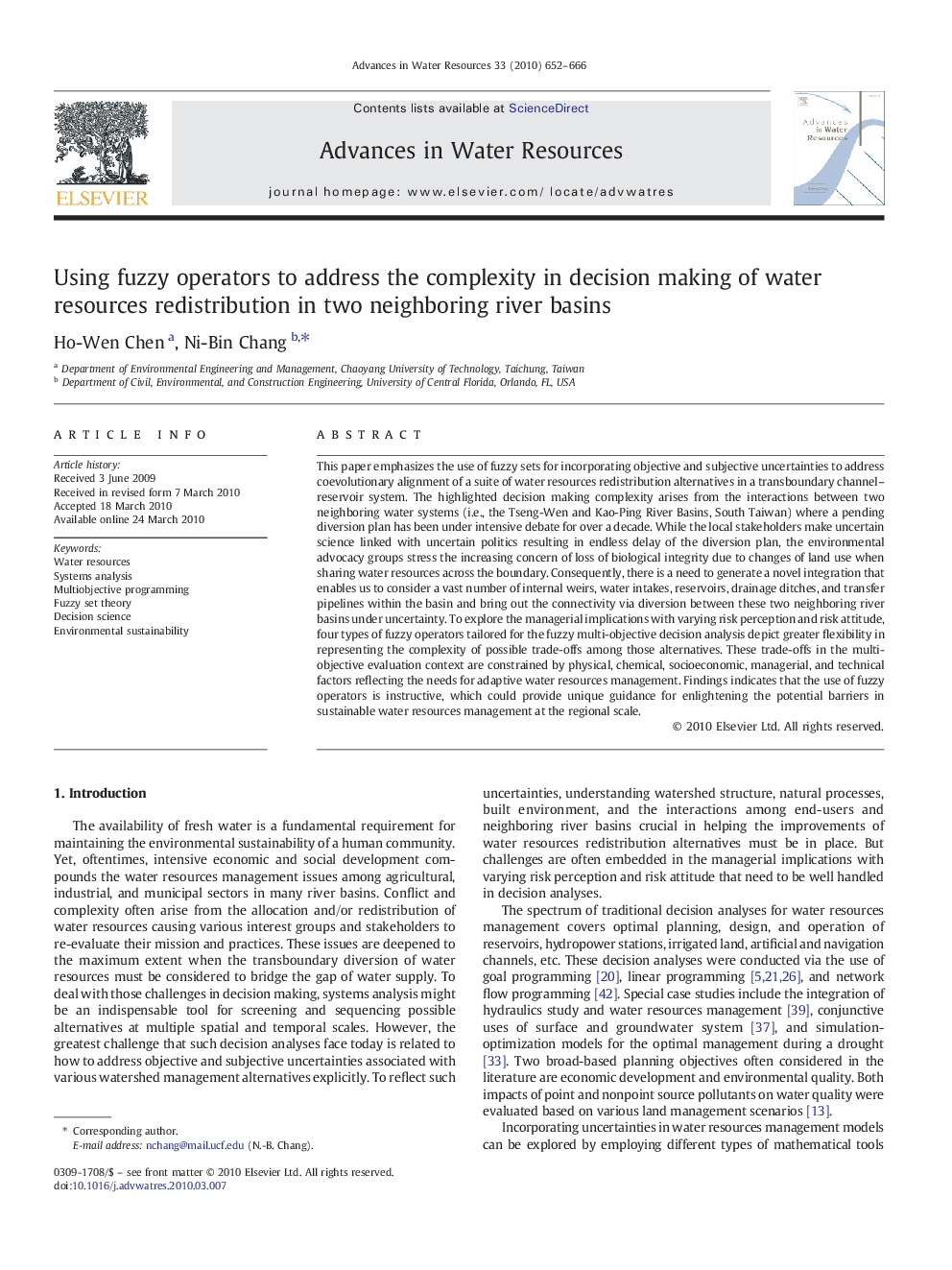| Article ID | Journal | Published Year | Pages | File Type |
|---|---|---|---|---|
| 4526504 | Advances in Water Resources | 2010 | 15 Pages |
This paper emphasizes the use of fuzzy sets for incorporating objective and subjective uncertainties to address coevolutionary alignment of a suite of water resources redistribution alternatives in a transboundary channel–reservoir system. The highlighted decision making complexity arises from the interactions between two neighboring water systems (i.e., the Tseng-Wen and Kao-Ping River Basins, South Taiwan) where a pending diversion plan has been under intensive debate for over a decade. While the local stakeholders make uncertain science linked with uncertain politics resulting in endless delay of the diversion plan, the environmental advocacy groups stress the increasing concern of loss of biological integrity due to changes of land use when sharing water resources across the boundary. Consequently, there is a need to generate a novel integration that enables us to consider a vast number of internal weirs, water intakes, reservoirs, drainage ditches, and transfer pipelines within the basin and bring out the connectivity via diversion between these two neighboring river basins under uncertainty. To explore the managerial implications with varying risk perception and risk attitude, four types of fuzzy operators tailored for the fuzzy multi-objective decision analysis depict greater flexibility in representing the complexity of possible trade-offs among those alternatives. These trade-offs in the multi-objective evaluation context are constrained by physical, chemical, socioeconomic, managerial, and technical factors reflecting the needs for adaptive water resources management. Findings indicates that the use of fuzzy operators is instructive, which could provide unique guidance for enlightening the potential barriers in sustainable water resources management at the regional scale.
